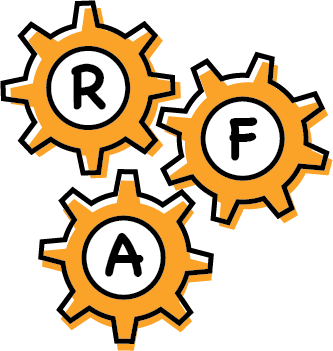CHECK OUT OUR UPCOMING EVENTS HERE
What is STEAM?
When I say STEAM, I don't mean the hot air that comes out of your Insta Pot. Even though that would be pretty cool, I'm actually talking about STEAM, the acronym. STEAM stands for

This acronym is a way to condense the important fields of study into one acronym. This important acronym will help revolutionize the future and help make the world an amazing place! Let's go a little more in depth about the different areas of STEAM.
Science
What is Science? Science is the study of the world and the behavior of different things (living and non-living) to better understnad how the world works. In science, you understand the stars & planets, why hydrogen and oxygen make water, how friction impacts motion, and so much more! In science, you use your discoveries to solve problems and make inventions that can solve them! With science, you can really understand how the world works! There are so many things that can be done with Science!
Technology
What is Technology? Technology is the application of scientific knowledge, machinery, equipment, and engineering for practical purposes, especially in industry. Technology includes your computer, cellphone, and other software/hardware machinery. For example, building a car takes a lot of precision and sharp tools. However, you can use technology to build the car for you! This way, you are safe, the cars are built even better, and you have saved yourself a lot of time! You can even program and build robots to perform tasks for you!
Engineering
What is Engineering? Engineering is the way to solve a problem. Engineers solve many sorts of problems like food, water, shelter, technology, and so much more! Engineers solve problems and help us in many different ways. For example, let's say that you are building an airplane. You would need an engineer to build the airplane! Engineers typically follow the "Engineering Design Process". Engineers can help many people!
Art
What is Art? Art is the expression or application of human creative skill and imagination. This includes the liberal arts as well, meaning language arts, social studies, physical arts, fine arts, and music. Art is a great way to express emotion and our thoughts. With Art, we encourage ourselves to be creative and think outside the box to solve problems!
Math
What is Math? Math is the means and foundation to the solid development of the skills of learning, logical thinking and reasoning. Math can help you find out the sum of two prices in a store! Precise math calculations are used to make sure that the rockets are launched perfectly without error. Math is really important and it is used everywhere!
STEAM is awesome! The way that these 5 subjects can impact the world is truely amazing, so let's explore that next!
According to National Science Foundation, "In the 21st century, scientific and technological innovations have become increasingly important as we face the benefits and challenges of both globalization and a knowledge-based economy. To succeed in this new information-based and highly technological society, students need to develop their capabilities in STE[A]M to levels much beyond what was considered acceptable in the past." This means that STEAM is used to solve global problems such as climate change and little problems such as turning off the light in the night. STEAM can solve all sorts of problems and while the world innovates to this new technology, you can be a part of it!
Robotics
What is Robotics? Robotics is the science of creating robots. Robots are machines that can carry out a complex series of actions automatically, especially one programmable by a computer. Robots can help us do daily tasks, and greatly innovate today's world.
Have you ever wondered what builds your car? How are food trays automatically brought to the back of the store? How do mechanical delivery systems work? Robotics can help improve the economy and make every day tasks much easier to complete.
Robotics can revolunize the future and create jobs that have never opened up before. These can be high-paying jobs that will strength the economy. Robotics can help us in many ways, and it is time for you to become a part of it! To learn about the amazing benefits of robotics, watch this short video:
FIRST
FIRST is a non-profit organization that hosts robotics competitions for students to gain great hands on experience in the STEAM field. Along with STEAM, it also gives you leadership and communication skills, growing you better as a person.This is FIRST's Mission Statement:
The mission of FIRST® is to inspire young people to be science and technology leaders and innovators, by engaging them in exciting mentor-based programs that build science, engineering, and technology skills, that inspire innovation, and that foster well-rounded life capabilities including self-confidence, communication, and leadership.
FIRST is an awesome program that challenges young minds!! There are multiple stages of FIRST for different age groups. Based on your age / grade level, you can join a different program. Let's look at the different stages:
FLL
FLL is one of the 3 FIRST competitions, made up of FLL Discovery, FLL Explore, and FLL Challenge. FLL Discovery is "productive learning habits, confidence, and teamwork skills along the way. GRADES PreK-1 For children ages 4-6, this playful introductory STEAM program ignites their natural curiosity and builds their habits of learning with hands-on activities in the classroom and at home using LEGO® DUPLO® bricks" (FLL Website). This will challenge young thinks to grow and innovate!! In FLL Explore, "teams of students ages 6-10 focus on the fundamentals of engineering as they explore real-world problems, learn to design, and code and create unique solutions made with LEGO bricks and powered by LEGO® Education WeDo 2.0" (FLL Website). This is for a little older age group, but still challenges you to think outside the box. FLL Challenge is the most common out of the three and is "friendly competition, at the heart of Challenge, as teams of students ages 9-16* engage in research, problem-solving, coding, and engineering - building and programming a LEGO robot that navigates the missions of a robot game" (FLL Website). For more information, please check out the FLL Website!
FTC
FTC is another one of the FIRST competitions. FIRST Tech Challenge students learn to think like engineers. Teams design, build, and code robots to compete in an alliance format against other teams. Robots are built from a reusable platform, powered by Android technology, and can be coded using a variety of levels of Java-based programming. FTC is a great competition and a great experience, an amazing way to challenge yourself and learn in ways that you never could. For more information, please check out the FTC Website!
FRC
FRC is the last of the three in the FIRST competitions. FRC includes aspects of FTC, but still is an amazing challenge of its own. According to the FRC website, "FIRST® Robotics Competition teams design, program, and build a robot starting with a standard kit of parts and common set of rules to play in a themed head-to-head challenge. Teams also build a brand, develop community partnerships for support, and work to promote STEAM in their local community"(FRC Website). FRC is found commonly within schools, but it is meant for all high school students who want to challenge themselves. For more information, please check out the FRC Website!
As you can see, FIRST is awesome! It has these many components that can challenge us and encourage us to think creatively. If you want to create a team or find more details, don't forget to check out the following links above!
Resources
FIRST Robotics - A non-profit organization that hosts robotics competitions
Robotics for All Youtube Channel! - Full of many STEAM videos!
The Whiz - A Youtuber that creates videos on Math and Programming, promoting STEAM in various ways.
Lego Mindstorms - Lego Mindstorms is the programming application used in FLL
Lego Digital Designer (LDD) - LDD is the CAD software used in FLL
NASA - NASA is a government organization that specializes in space research
Check out our Blog for more updates and posts!
Check out our Youtube Channel!
Robotics For All
Robotics for All is a 501(c)(3) non-profit organization that is dedicated to spread STEAM and Robotics programs throughout our community to give everyone an equal opportunity to pursue Robotics and STEAM.

